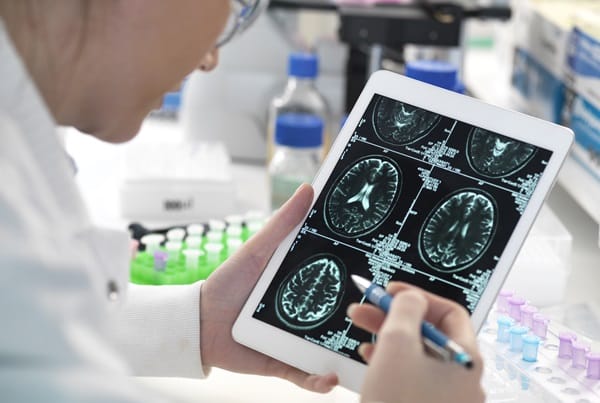Delving into the remarkable realm of brain adaptability, this exploration sheds light on how the human brain is not just a static organ but a dynamic entity capable of remarkable changes. This adaptability, known as neuroplasticity, is pivotal in understanding how you learn, recover from injuries, and adapt to new challenges throughout your life. From the fundamentals of brain changes to the impact of lifestyle choices on your cognitive health, each segment of this post will unravel the mysteries of your brain’s incredible capacity to adapt and evolve.
Contents
- The Basics Of Neuroplasticity
- The Brain’s Response To Learning And Experience
- Recovery And Rehabilitation: The Brain’s Resilience
- Aging And Cognitive Flexibility
- Lifestyle Choices And Brain Health
- Mental Health And Adaptive Therapies
- Neuroplasticity In The Digital Age
- The Future Of Neuroplasticity Research
- The Bottom Line
- Related
The Basics Of Neuroplasticity

Neuroplasticity, a term that once challenged long-held beliefs in neuroscience, refers to the brain’s ability to reorganize itself both physically and functionally throughout one’s life as a response to the environment, behavior, and thoughts. This concept, once thought impossible, has now been universally accepted, revealing that the brain is not hard-wired but is malleable and adaptable. The journey of understanding brain adaptability began in the 20th century, with pioneering research overturning the notion that the adult brain is a fixed and unchangeable entity. This shift in understanding opened up new possibilities in approaching learning, memory, and recovery from brain injuries.
The brain’s adaptability manifests in two primary forms: structural and functional neuroplasticity. Structural neuroplasticity involves changes in the brain’s physical structure as a result of learning and experience. For instance, the hippocampus, known for its role in memory and learning, can physically change its size and shape in response to new information and experiences. On the other hand, functional neuroplasticity refers to the brain’s ability to move functions from a damaged area to undamaged areas. This type of plasticity allows the brain to compensate for injury and adjust its activity in response to new situations or changes in the environment.
The Brain’s Response To Learning And Experience

The brain’s response to learning and experience is a testament to its remarkable adaptability. When you learn something new, your brain’s neural pathways, which are responsible for transmitting information, undergo significant changes. This process, known as synaptic plasticity, is the foundation of learning and memory. It involves the strengthening or weakening of synapses, the junctions between neurons, which ultimately shape your ability to learn and remember. For example, when learning a new language, the brain forms new connections, and with repeated practice, these connections become stronger and more efficient.
Experiences, both positive and negative, play a crucial role in shaping the brain’s structure and function. Positive experiences, such as engaging in challenging cognitive tasks, can enhance brain plasticity, leading to improved cognitive abilities. Conversely, negative experiences like chronic stress can impair neuroplasticity, affecting memory and learning. This dynamic nature of the brain highlights the importance of continuous learning and positive environmental interactions. ‘
Recovery And Rehabilitation: The Brain’s Resilience

The concept of neuroplasticity is particularly hopeful in the context of recovery and rehabilitation from brain injuries. The brain’s resilience and ability to reorganize itself can lead to remarkable recoveries, even in cases of severe brain damage. Rehabilitation therapies that focus on neuroplasticity involve activities and exercises designed to stimulate brain function and promote the formation of new neural pathways. These therapies are based on the principle that the brain can relearn lost abilities or transfer these abilities to different brain areas, a process known as compensatory masquerade.
One of the most compelling aspects of neuroplasticity in recovery is the brain’s ability to rewire itself in response to therapy. For instance, stroke victims who have lost certain motor functions can regain these abilities through repetitive and targeted physical therapy. This form of rehabilitation works by encouraging the brain to form new connections and pathways, compensating for the damaged areas. However, the extent of recovery depends on several factors, including the severity of the brain injury, the age of the individual, and the timing and intensity of the rehabilitation efforts.
Aging And Cognitive Flexibility

As you age, your brain’s neuroplasticity undergoes changes, but this does not necessarily mean a decline in cognitive flexibility. Recent research has challenged the notion that aging inevitably leads to a significant decrease in the brain’s ability to adapt and reorganize. While certain aspects of cognitive function, such as processing speed, may decline with age, other areas, like emotional regulation and wisdom, often improve. This suggests that the aging brain retains a degree of plasticity, which can be harnessed to maintain and even enhance cognitive abilities in older adults.
Strategies to enhance cognitive flexibility in aging involve both mental and physical activities. Engaging in intellectually stimulating activities, such as learning a new skill or hobby, can help maintain and improve cognitive function. Physical exercise, particularly aerobic exercise, has also been shown to promote neurogenesis – the creation of new neurons – in the brain, particularly in the hippocampus. Additionally, social engagement and maintaining a healthy lifestyle play crucial roles in preserving brain health. By understanding and leveraging the principles of neuroplasticity, older adults can actively contribute to their cognitive well-being, challenging the outdated belief that aging inevitably leads to cognitive decline.
Lifestyle Choices And Brain Health

The impact of lifestyle choices on brain health cannot be overstated. Diet, exercise, and sleep play crucial roles in maintaining and enhancing neuroplasticity. A balanced diet rich in antioxidants and omega-3 fatty acids, for instance, has been shown to support cognitive function and promote the health of brain cells. Regular physical exercise, particularly aerobic activities, not only improves overall physical health but also contributes to the growth of new neurons, a process known as neurogenesis. Moreover, adequate and quality sleep is essential for the consolidation of memory and learning, a clear demonstration of the brain’s plasticity at work during rest.
Mental exercises and activities are equally important in stimulating brain adaptability. Activities that challenge the brain, such as puzzles, learning a new language, or playing a musical instrument, can strengthen neural connections and even create new ones. This form of mental stimulation is vital in building cognitive reserves, which can help delay the onset of neurodegenerative diseases. Stress management is another critical aspect, as chronic stress can negatively impact the brain’s plasticity, affecting memory and learning.
Mental Health And Adaptive Therapies

The relationship between mental health and brain adaptability offers a new perspective on treating various psychological conditions. Neuroplasticity provides a foundation for understanding how mental health disorders develop and how they can be treated. For instance, conditions like depression and anxiety have been linked to certain patterns of neural activity. Therapies that focus on altering these neural patterns, such as cognitive-behavioral therapy (CBT), leverage the brain’s ability to change and adapt, offering effective treatment options. Additionally, mindfulness-based therapies have shown promise in modifying neural pathways associated with stress and emotional regulation.
The future of mental health treatment is increasingly focusing on the brain’s adaptability. With advancements in neuroscience, there is a growing interest in developing treatments that specifically target neuroplasticity. This includes not only psychological therapies but also pharmacological interventions that can enhance the brain’s plasticity. Such treatments hold the potential for more effective and personalized approaches to mental health care, offering hope for those with conditions that have been resistant to traditional treatments. As the understanding of the brain’s adaptability deepens, it opens new avenues for innovative and effective mental health interventions.
Neuroplasticity In The Digital Age

The digital age has brought about significant changes in the way people interact with information and technology, impacting the brain’s plasticity. The constant flow of information and the rapid pace of digital communication can both challenge and benefit your cognitive functions. On one hand, the use of digital technology, especially the internet, can enhance cognitive skills like problem-solving and decision-making. On the other hand, there is a concern about the potential for digital overload, which can lead to issues like reduced attention span and memory problems.
The role of digital technology in shaping your brain’s adaptability is a topic of ongoing research. While some studies suggest that excessive screen time can have negative effects on the brain, especially in children and adolescents, others point to the benefits of digital tools in enhancing learning and cognitive abilities. It is crucial to find a balance in your digital consumption and to use technology in ways that support, rather than hinder, your brain’s health and adaptability.
The Future Of Neuroplasticity Research

As you look toward the future, the field of neuroplasticity research holds immense potential. With advancements in brain imaging technologies and neuroscience, researchers are gaining deeper insights into how the brain changes and adapts. This could lead to breakthroughs in understanding and treating neurological and psychiatric disorders. Additionally, the exploration of neuroplasticity has implications for educational practices, suggesting more effective ways of learning and teaching.
The potential for applying neuroplasticity research in developing brain-computer interfaces (BCIs) and neuroprosthetics is another exciting frontier. These technologies could revolutionize the way individuals with neurological impairments interact with the world, offering new levels of independence and quality of life. Furthermore, the ongoing research into neuroplasticity challenges the understanding of the human brain, opening up possibilities for enhancing cognitive abilities and even extending the healthy lifespan of the brain.
The Bottom Line
The journey through the realms of neuroplasticity reveals the brain’s remarkable capacity to adapt and evolve. This understanding empowers you to actively engage in practices that enhance your cognitive health and adaptability. Whether through lifestyle choices, mental health therapies, or embracing technological advancements, each step you take can contribute to your brain’s resilience and flexibility. Let’s embrace the potential for change and growth that your brain offers, committing to lifelong learning and brain health maintenance for a brighter, more adaptable future.


